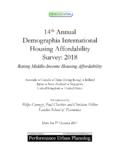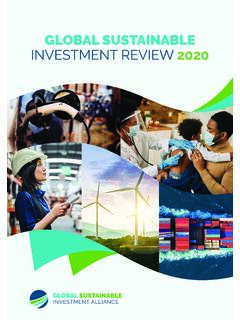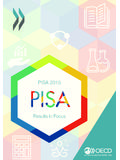Transcription of Silvia Montoya - UNESCO
1 Defining literacySilvia MontoyaGAML Fifth Meeting17-18 October 2018 Hamburg, GermanyLiteracy is the ability to identify, understand, interpret, create, communicate and compute, using printed and written materials associated with varying involves a continuum of learning in enabling individuals to achieve their goals, to develop their knowledge and potential, and to participate fully in their community and wider society( UNESCO , 2004; 2017).Defining literacy : UNESCO literacy is about the uses people make of it as a means of communication and expression, through a variety of media; literacy is plural, being practiced in particular contexts for particular purposes and using specific languages; literacy involves a continuum of learning measured at different proficient levels. Three key features of the UNESCO definition of literacy UNESCO -led assessments: LAMP and RAMMAD efining literacy : Other international organizations or assessment programmesInternational organizationDefining literacyNoteEuropean literacy Policy Network: European Declaration of the Right to literacy literacy refers to the ability to read and write at a level whereby individuals can effectively understand and use written communication in all media (print or electronic), including digital literacy .
2 A multi-layered definition of literacy , from baseline literacy to functional and multiple : survey of Adult Skills (PIAAC) literacy is understanding, evaluating, using and engaging with written text to participate in the society, to achieve one's goals and to develop one's knowledge and measures adults proficiency in key information-processing skills - literacy , numeracy and problem solving in technology-rich environmentsWorld Bank: Skills Towards Employability and Productivity (STEP)Cognitive skills are defined as the ability to understand complex ideas, to adapt effectively to the environment, to learn from experience, to engage in various forms of reasoning, to overcome obstacles by taking thought assess the skills (cognitive, technical, and non-cognitive) of adults in urban areas. scales of the test are the same as those used in the PIAAC. Definition invokes continuum Assessment covers full range of skills Statistical methods confirm psychometric stability Statistical methods support comparisonoDirect assessments: International nationaloIndirect assessment: International nationalFour criteria are used to describe assessment/ survey on literacyA glance of existing assessments grouped into four:International: Direct assessment on literacyDefinition invokes continuumAssessment covers full range of skillStatistical methods confirm psychometric stabilityStatistical methods support comparisonPIAACYYYY38 countriesIALS and ALLYYYY11 countries conducted ALLSTEPYYYYU rban areas in 15 countriesLAMPYYYY4 countriesRAMAAYNNN12 countriesFeatures by criteria Projection Model Data SourceNational.
3 Direct Assessment on LiteracyCountryAssessmentDefinition invokes continuumAssessment covers full range of skillStatistical methods confirm psychometric stabilityStatistical methods support comparisonAdaptiveBangladesh Education Watch 2016 YNNNNB otswanaNational literacy surveyYNNNNC anadaTest of Workplace Essential Skills YYYYYF ranceThe Information and Everyday Life SurveyYNYNNG ermanyLevel One Study (LEO)YNYYNI ndiaNational literacy Mission. YYYNNK enyaThe Kenya National Adult literacy survey YYYNNLao PDRLao National literacy survey YNNNNNew zealand The literacy and Numeracy for Adults Assessment ToolYYYNYP apua New Guinea Education Experience survey and literacy AssessmentYNNNNUSAA dult literacy Supplemental Assessment YYYYNN ational: Indirect assessment on literacyNotes: 1. *For some countries that conducted DHS, respodentswere further asked if they "never", "almost never", or "sometimes" have difficulty understanding what they read and if they "never", "almost never", or "sometimes" have difficulty writing.
4 2. Countries that use educational attainment to estimate the literacy rate are not included in this literacyMode Definition invokes continuumAssessment covers full range of skillStatistical methods confirm psychometric stabilityStatistical methods support comparisonExample of countriesInternational household survey programmesMultiple Indicator Cluster survey (MICS)Can read part of the sentenceLiteracy testNNNNB arbados and other 15 countriesCan read and writeSelf declarationNNNNA lgeria and other 3 countriesDemographic and Health Surveys(DHS)Able to read parts of or a whole sentence*Self declarationNNNNB enin and other 20 countriesNational census or survey (selected examples)Labour Force SurveyCan read and write a simple text in ..(given languages) or any languagesLiteracy testNNNNC olombia and other 25 countriesAbility to read and write in any languageSelf-declarationNNNNP opulation CensusCan read, understand and write a short story regarding one's routine lifeLiteracy test, or self-declarationNNNNA zerbaijan 2009 Living Standard Measurement SurveyAbility to write a personal letter or read a 2012 Continuous Household SurveyCan read and write Self-declarationNNNNU ruguay 2015 Core Welfare Indicators Questionnaire Can read and write in any languageSelf-declarationNNNNL iberia 2010 Functional literacy , Education and Mass Media SurveyCan read and write a simple message in any language or dialectSelf declarationNNNNP hilippines 2013 General House SurveyThe literate are those who have no difficulty or some difficulty in reading and writingSelf-declarationNNNNS outh Africa 2015 National Socio-Economic SurveyCan read and write one of the following languages.
5 Latin, Arabic, or other alphabetSelf-declarationNNNNI ndonesia 2016 The Reading of Population SurveyCan read and writeSelf-declarationNNNNT hailand 2015 UIS Global Age-Specific literacy Projections (GALP)Regression analysis is applied to age-disaggregated literacy data, in combination with demographic data by the UN Population Division (UN Population Division, 2011), to determine the likely evolution of literacy rates based on past : Indirect assessment on the literacy rate: Projection by the UISD efinition invokes continuumAssessment covers full range of skillStatistical methods confirm psychometric stabilityStatistical methods support comparisonCountriesGALP using national population census or surveyNNNNA rgentina 2014 and other 23 countriesGALP using DHS dataNNNNC ongo 2011 and other 14 countriesGALP using MICS dataNNNNA ngola 2014 and other 13 countriesFeatures by criteria Projection Model Data SourceLearn more @ UNESCO statData to transform lives




